Jessica Abernethy endeavors to be a good listener — at least, when it’s textiles that are doing the talking. “I always let the fabric talk to me,” she says.
In the small interior of Dün, the Provincetown shop she runs with designer Jonathan Joseph Peters, she lifts a chore jacket from a rack. It’s short and lightweight, meant to be a practical, everyday garment, but you’d never call it ordinary. She made it from a piece of upholstery with “a weird velour stripe that you wouldn’t find in a regular fabric.”
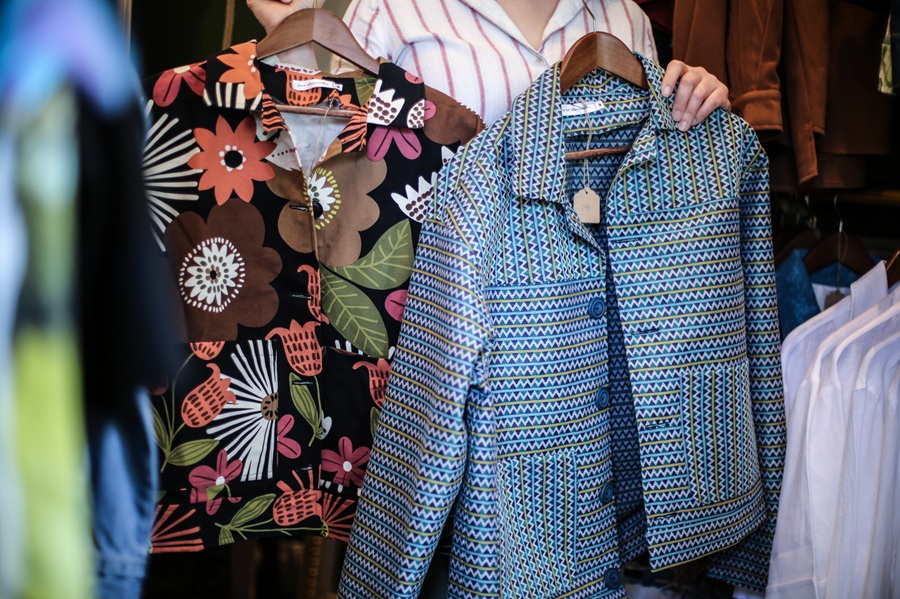
Everything about upholstery fabric — it’s soft and sturdy and made for wear — tells Abernethy it’s great for coats. She uses remnants from fabric stores often in her work: there’s a long overcoat made from a leopard print and a textured black one; there’s a striped skirt that hangs elegantly.
Abernethy never wanted to be anything but a fashion designer. When she was growing up in Danbury, Conn., she played dress-up in her mother’s closet. Her mother was very fashionable, she says, but didn’t want to teach her how to sew. “She had no patience,” says Abernethy, but eventually, “she buckled.”
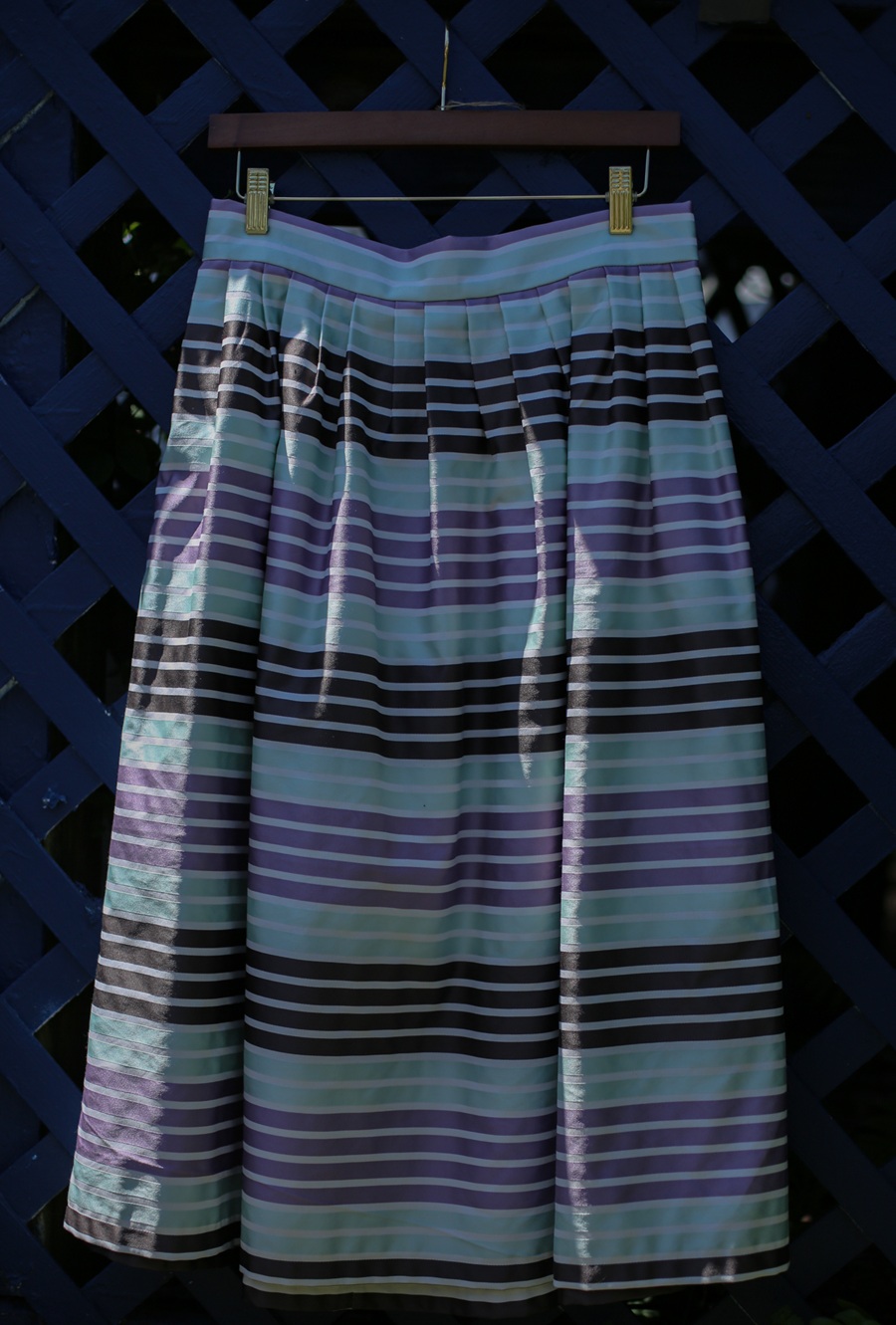
Abernethy does her designing and sewing at home in Providence, where, she says, “I’ve devoted an entire apartment to my studio and fabric collecting,” and commutes to Provincetown once a week, staying from Monday to Wednesday to help with the shop.
Designs by Abernethy and by Peters will be among those of nine local designers featured at the third annual “First Look” show in the garden of the Mary Heaton Vorse house on Friday, June 6.
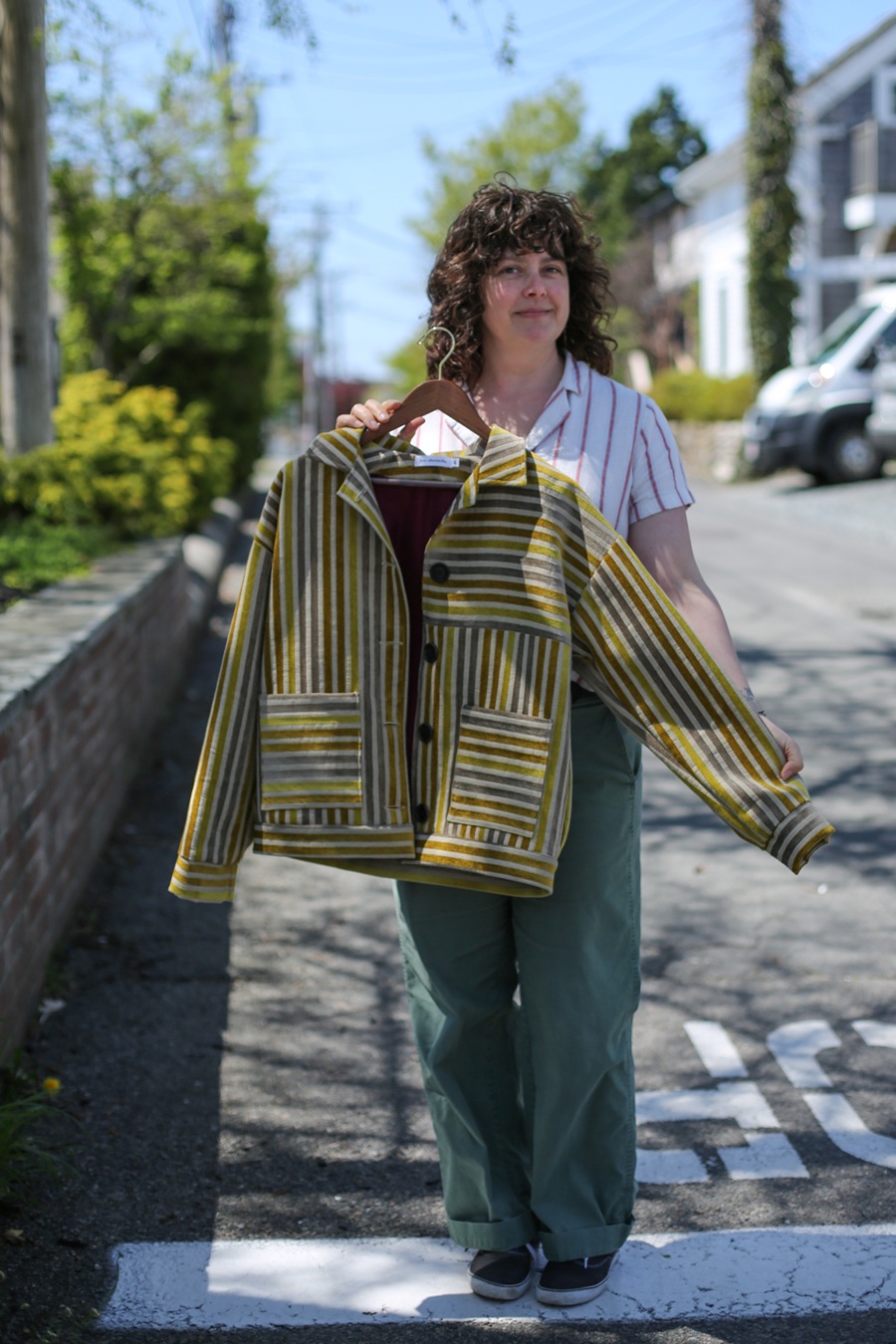
Daniel Hammond, the designer behind Plush, the Provincetown knitwear shop, who organized the event, says that this is a chance to see handmade works up close amid a “garden party vibe.” Guests are encouraged to touch the clothes and talk with the designers about their work. The evening, pop-up shopping and all, benefits the Soup Kitchen in Provincetown (SKIP) and the Homeless Prevention Council.
At Dün, which opened last June, a necklace designed by Peters shines on the neck of a mannequin. His jewelry — necklaces and earrings made from smooth clear and rose quartz and moonstone and chalcedony, all pale stones with a milky glow — will be part of the June 6 show. The stones are nestled between vertebrae from snakes and birds. Peters says he’s interested in the juxtapositions of smooth and textured, natural and manufactured elements. Beside the glassy surface of polished quartz, a piece of bone becomes an elegant accessory.
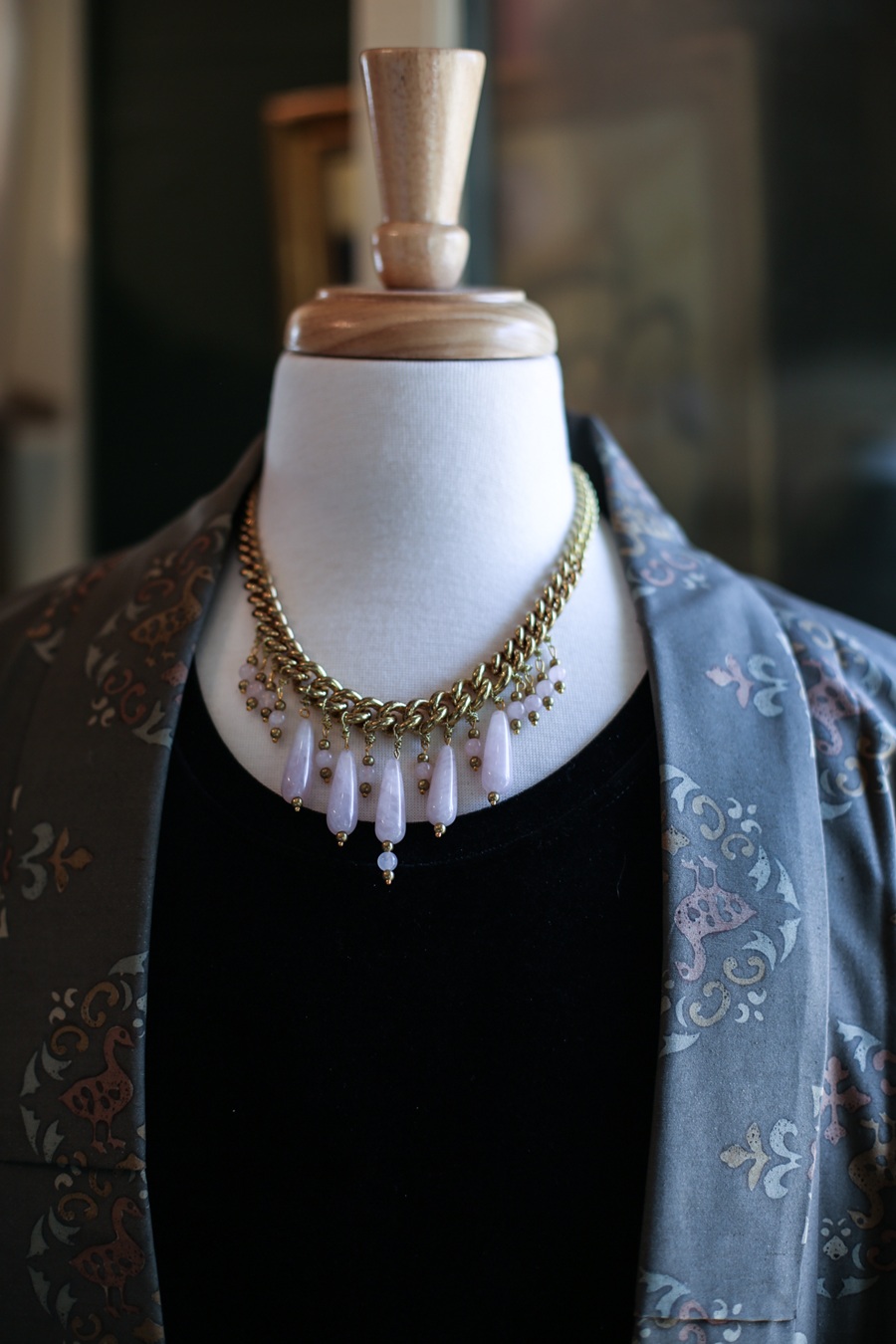
Peters grew up in Woonsocket, R.I., where his mother taught him how to sew when he was 10. By then he was already perusing fashion magazines and watching fashion shows. In high school, he made prom dresses for his friends.
“I’ve always been really interested in how shapes fit together to make garments,” says Peters. And he’s intrigued by essential questions: “What are clothes? Why is something fashionable?”
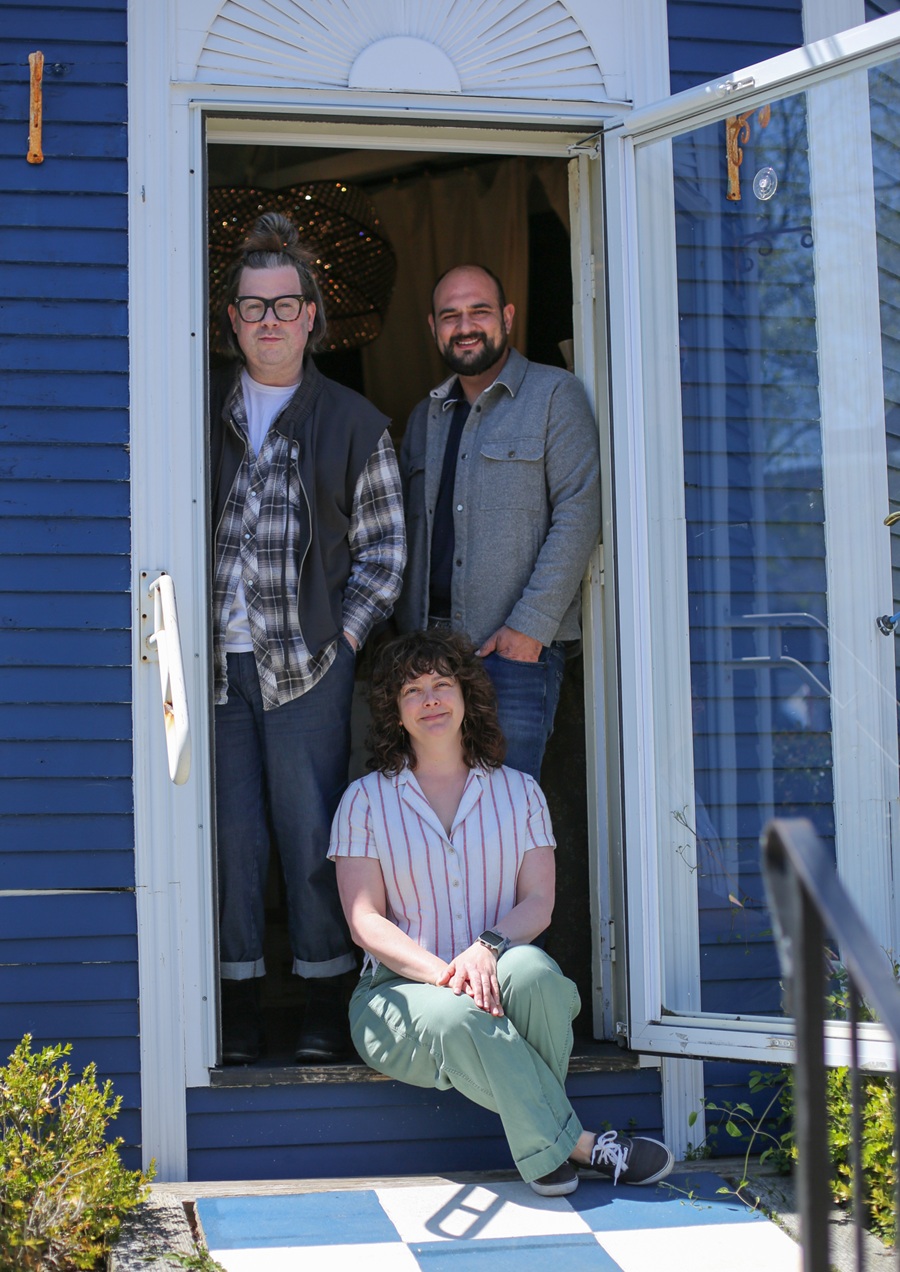
Peters, whose drag persona is Vivienne Fontaine, has designed and made costumes for fellow performers around town since moving here in 2021. Delta Miles, Anita Cocktail, Raquel Blake, and musician Mike Flanagan have all worn his designs.
But Peters has a practical side, too. He does alterations. Not only that — where there’s fabric to be mended, Dün is there: “I’m fixing cushions for the Freemans patio,” he says. “I’m making an awning for Gifford House.”
Peters is interested in “clothing that doesn’t subscribe to a gender profile and also doesn’t necessarily subscribe to a size.” He likes things that are “boxy, short, wide,” as well as “sweeping shapes,” he says, and “interesting fabrics.” Everything sold at Dün was made by someone Peters and Abernethy know; most are friends made through makers markets and other craft events.
One of those people is Susan Troy, a maker from Rhode Island who hand-paints linen. She sews the pillows sold at Dün. Peters also buys yards of her painted linen for his own clothing designs. He likes that the pieces combine her art and his, and then the wearer “gets their hands on it and turns it into their own expression. It’s like this multi-layered onion of fashion and design and art.”

The idea that an individual wearer is required to turn clothing into fashion is one Peters and Abernethy both subscribe to.
For Abernethy, the best part of designing is “seeing somebody try something on and actually love it,” she says. “Seeing it walk down the street.”
Peters says his thinking was influenced by Bill Cunningham, the New York Times’s late, fabled street fashion photographer, who always held that “a garment that doesn’t navigate the world, and isn’t seen on the street, that people aren’t wearing, isn’t fashion.”
In the end, says Peters, “a sense of individuality is what makes fashion.”
Local Designers
The event: The third annual “First Look”
The time: Friday, June 6, 5 p.m.
The place: Mary Heaton Vorse house, 466 Commercial St., Provincetown
The cost: $35 to $250, benefits SKIP and the Homeless Prevention Council



